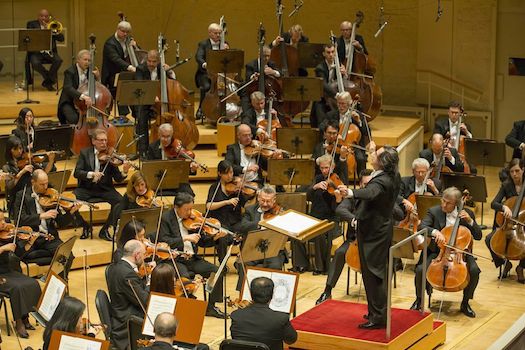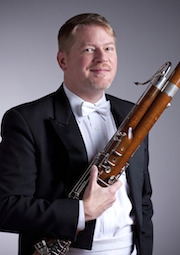
Schubert: Symphony No. 6 in C major D.589 (1818)
Mozart: Bassoon Concerto in B flat major K. 191 (1774)
Schubert: Symphony No. 1 in D major D. 82 (1813)
David McGill, bassoon
Chicago Symphony/Riccardo Muti
Orchestra Hall, Chicago
Tuesday, June 17, 2014
Many years ago Riccardo Muti recorded all the Schubert symphonies with the Vienna Philharmonic. The recordings were widely praised for their elegance and warmth. Now Muti has brought his authority in Schubert to Chicago. Over the course of the 2013-2014 season he has been presenting all eight symphonies. There are other symphonic movements and unfinished fragments but Muti has chosen to ignore them and concentrate on the acknowledged canon. This latest instalment in the Chicago Symphony (CSO) series showed that Muti’s approach has not changed much over the years in spite of major developments in our understanding of performance practice in Schubert’s time.
Muti is not playing the symphonies in chronological order. The “Great” C major, so-called because of its length and power, has already been played. The “Little” C major is a much slighter work and often ignored by conductors because it suffers by comparison. In its own right, however, it is modestly grand and contains its share of inspired Schubertian melody. Muti used a reduced orchestra and made sure that the essential classical restraint of the work was honoured. This meant that the fortes were never pushed, tempos were moderate, vibrato was limited and phrasing tasteful rather than romantically inflated.
The Conductor’s Art Indeed!
For some listeners, the overall effect might have been boring; to my ears, however, what Muti and his players did was prepared with the most careful attention to detail and beautiful in every respect. I was struck by Muti’s handling of the softer passages. There is a lot of repetition in Schubert and orchestral players tend to play this music at a mezzo forte volume from beginning to end – and this is where the boredom sets in. Muti demanded soft playing from the strings – often giving the effect of a musical whisper – that forced the listener to pay attention.
Muti’s approach to the very early Symphony No. 1 was similar, except that he managed to breathe more life into this slight work than I had ever heard before. The “inside” parts in the slow movement were a revelation. While attention is rightly focused on the melodies – usually in the winds – Muti brought out other lines in the music that changed the mood, often making the overall effect a little darker. But the conductor did this in a way that was not the least bit exaggerated; the conductor’s art indeed!
The last movement is by its very nature exuberant, but Muti made the music even more joyous. Here the secret was crispness of articulation. But Muti also showed real mastery in balancing the classical orchestra. The Schubert First is scored for strings, a handful of winds and trumpets and timpani. The two trumpets can easily drown out the small string section, but there are moments when they need to be heard at something close to full power. Muti got it exactly right. The trumpets mostly blended into the orchestral texture, but in the final movement when their moments came, they burst forth splendidly. This was no accident and it needs to be judged with great care. Fine playing and masterly conducting. I’ll have more to say about Muti and historically informed performance practice in the next two articles in this series.
Principal Bassoon Bids CSO Farewell

The other work on the program was Mozart’s Bassoon Concerto, undoubtedly the finest concerto yet written for the instrument. It is always a pleasure to hear it but this was a special occasion. David McGill, a beloved Chicago Symphony principal player was retiring from the orchestra to take a full-time teaching position at Northwestern University. McGill has held principal positions in the Toronto Symphony and the Cleveland Orchestra, but Chicago was the place he stayed for the longest time – seventeen years – and it was in Chicago that he chose to end his orchestral career.
McGill is one of the finest bassoonists to ever take up the instrument and on the evidence of this concerto performance, he is going out at the very top of his game. McGill is the kind of bassoonist who makes the opening of Le sacre du printemps sound angelic rather than strangled. In the Mozart, no matter what register he was playing in, the sound was beautiful and totally under control. The Mozart Bassoon Concerto is in no sense a “technical” piece and yet the composer made sure that only the finest players could meet the challenges he set them.
McGill composed his own cadenzas for this performance and there were stylistically appropriate and just the right length. Muti and McGill’s CSO colleagues accompanied with perfection. The ovation at the end, from audience members and players alike was extraordinarily heartfelt.
In the next article in this series on Muti in Chicago, I will review the last Muti-CSO concert of the current season, devoted to Schubert and Mahler. The final article will offer an account of the remarkable meeting held recently in Chicago between Muti and members of the Music Critic’s Association of North America (MCANA).
Paul E. Robinson
Paul Robinson is the author of Herbert von Karajan: the Maestro as Superstar, and Sir Georg Solti: His Life and Music. For friends: The Art of the Conductor podcast, “Classical Airs.”
- SCRUTINY | TSO Lets Berlioz Do The Talking In Season Opener - September 21, 2018
- RECORD KEEPING | Even Yannick Nézet-Séguin Can’t Make Us Love Mozart’s La Clemenza di Tito - September 6, 2018
- RECORD KEEPING | Giovanna d’Arco With Anna Netrebko Explains Why The Best Operas Survive - August 30, 2018



